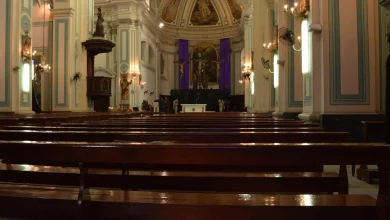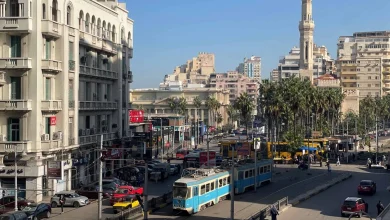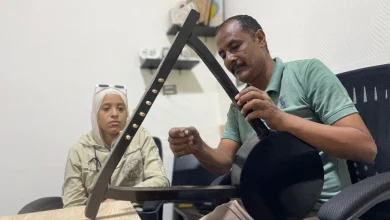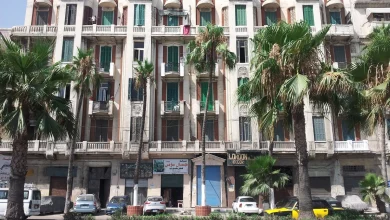In his latest exhibition, The Golden Smile, Shadi Habiba relied on technology to create something new and different from an artistic perspective, blending digital and natural collage.
Collage is a visual art form that involves assembling overlapping pieces to form a beautiful work of art. These pieces can be paper, fabric, or any other malleable material. To create a collage, these materials must be cut and arranged in a specific way and then glued to the surface on which the artwork is being created.
The Golden Smile Exhibition
The Golden Smile Exhibition is open to the public free of charge until July 15 at the Shalter art space on Fouad Street in downtown Alexandria.

Shadi Habiba
Who is Shadi Habiba? Shadi Habiba is a visual artist with a passion for art. Although he studied under renowned artists, he did not attend the Faculty of Fine Arts. Instead, he studied graphic design at the Faculty of Applied Arts, which had a significant impact on his artistic career. He began his artistic life as a traditional artist, painting realistic and still life scenes in oil. Then he rebelled and began to think about creating something new and different. His first choice was modern technology, which could be a good medium for presenting something artistically different. Through his study of graphic design, he began working on digital collage and printing, understanding its details, types of paper, and printing methods. Shadi says, “Before, I used to work on regular collages from magazines, which was very tiring and made me feel frustrated and bored because it limited my ideas and confined me to the ideas and images in the magazine, but with Photoshop, I was able to have complete control over my work.”Shadi expressed his happiness at his second solo art exhibition in Alexandria, saying that technology has provided him, as an artist, with new materials, media, and methods to create good and different art.
The smile is a symbol of strength
Shadi Habiba said that the “Golden Smile” exhibition is a collection of portraits made using a specific technique he invented, which was carried out in two stages: The first stage is digital collage using Photoshop, which is the electronic stage, followed by the second stage, which is paper collage, an innovative technique that combines digital and manual collage.The exhibition features 30 images of women in a state of silent strength, smiling, but not with a smile of ease or comfort, rather a golden smile, the kind we smile when we are tired, anxious, or in pain, yet we smile nonetheless, not as a lie, but as an expression of resilience and a means of perseverance.Shadi added that he chose “The Golden Smile” as the title of the exhibition to express the idea of perseverance despite life’s difficulties. A smile does not hide reality, but tames it with beauty. It is a symbol of strength hidden in gentleness and an act of courage that we often overlook in our daily lives. This is evident in some of the portraits in the exhibition, where we find smiling faces but eyes that are sometimes confused or sad.

The architecture of Efreno and the Shelter space
Shadi Habiba expressed his delight at holding the exhibition in such a historic and distinctive place as “Shelter,” which is a translation of the English word “hideout” and refers to the nature of the place and its use as a hideout during World War II. Today, however, it has been transformed into a hideout for arts and cultural activities.Shelter is an art space located beneath the Everino Building, which was built in 1928. The new owners of the property have preserved the old design of the place and tried to restore it while maintaining its identity. This space has been converted into a cultural venue for people to gather around art, heritage, culture, film screenings, artistic discussions, and seminars. The design of the place consists of supporting walls, and the entire basement is made of limestone concrete.
Read also
14 years of silence… When will the Mosaic Museum in Alexandria see the light of day?
“I entered the garden once and found no flowers”… When insects and trees tell the story of humans






Hi, this is a comment.
To get started with moderating, editing, and deleting comments, please visit the Comments screen in the dashboard.